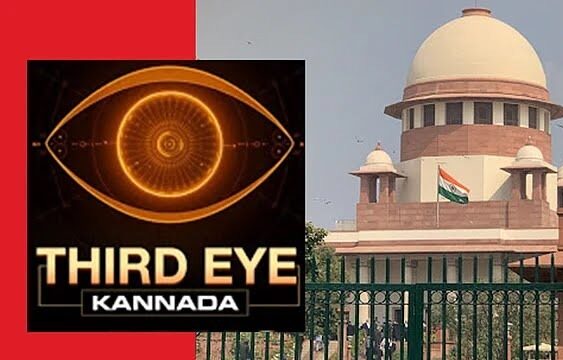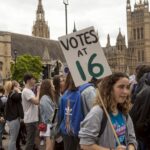🔹 Introduction
In a case that blends questions of faith, digital free speech, and institutional accountability, the Supreme Court of India recently issued a directive to a YouTube channel involved in controversial allegations about the Dharmasthala Temple Trust. The apex court asked the petitioner — a content creator — to first approach the Karnataka High Court before seeking relief from the country’s highest court.
The dispute centers around claims made by the YouTube channel, which alleged that unauthorized or secret burials had occurred on land belonging to the Dharmasthala Temple — a highly revered religious institution in Karnataka. These allegations were circulated via digital platforms and videos that quickly went viral. However, with public faith on one side and legal procedures on the other, the matter escalated to the Supreme Court.
This article presents a comprehensive, balanced, and thoroughly researched narrative of the case — tracing its origin, the legal complexities, broader implications, and what it means for digital content creators navigating India’s judicial landscape.
🔹 The Dharmasthala Temple: A Brief Background
Dharmasthala is not just a place of worship — it’s a legacy. Nestled in the Western Ghats of Karnataka, the Sri Manjunatha Swamy Temple in Dharmasthala holds immense significance for both devotees and scholars of South Indian spiritual heritage.
Governed by the Heggade family for over 800 years, the temple is known for its inclusive practices — where Jain administrators oversee a Hindu temple, symbolizing a rare confluence of belief systems. The current Dharmadhikari, Dr. D. Veerendra Heggade, is a Padma Vibhushan awardee known for philanthropy and rural development work.
The temple also holds considerable land across Karnataka and operates educational institutions, hospitals, and social reform programs. This makes it not just a spiritual hub but also a powerful socio-economic institution.
🔹 The YouTube Channel’s Allegations
The controversy began when a YouTube-based news channel uploaded a series of investigative videos claiming undisclosed and potentially illegal burials on temple land. The creators alleged that these acts were not just religious rites but concealed activities potentially violating legal and civic norms.
The allegations included:
- Claims of unauthorized use of land meant for public utility.
- Videos allegedly showing evidence of graves or burial mounds.
- Accusations against the temple trust and local authorities for suppressing facts.
These videos gained traction on social media, sparking debates and inviting both curiosity and outrage.
🔹 Reaction from the Dharmasthala Trust
Unsurprisingly, the Dharmasthala Trust issued a strong denial. Legal notices were reportedly sent to the content creator, accusing them of defamation, spreading misinformation, and hurting religious sentiments.
In their defense, the Trust argued:
- All temple land usage complies with state regulations.
- No evidence of illegal burials exists.
- The YouTube channel was attempting to malign the temple’s reputation for personal or political motives.
Supporters of the temple labeled the content “baseless,” while civil rights activists called for an impartial investigation.
🔹 Legal Escalation and Supreme Court Involvement
The YouTuber, facing potential legal action and possibly FIRs under defamation and religious incitement laws, escalated the matter directly to the Supreme Court of India.
What the Petitioner Wanted:
- Protection from arrest or legal harassment.
- A stay on defamation proceedings.
- Judicial inquiry or protection under freedom of speech.
Supreme Court’s Verdict:
The Supreme Court bench, led by Justice B.R. Gavai, did not entertain the plea at this stage. Instead, the court directed the petitioner to approach the Karnataka High Court first, stating:
“The petitioner must exhaust all remedies available under Article 226 before invoking Article 32.”
This ruling reaffirmed the hierarchy of judicial review — a foundational principle of Indian constitutional law.
🔹 Judiciary’s Stand on YouTube and Digital Content
India’s judiciary has, over the last decade, increasingly grappled with cases involving digital speech. The rise of YouTube channels, independent journalists, and social media influencers has expanded public discourse, but it has also tested legal boundaries.
Key Precedents:
- Shreya Singhal v. Union of India (2015)
This landmark case struck down Section 66A of the IT Act as unconstitutional. The Supreme Court upheld that vague restrictions on online speech violated Article 19(1)(a), which guarantees freedom of speech and expression. - Subramanian Swamy v. Union of India (2016)
Here, the Supreme Court upheld the criminal defamation law, stating that one’s right to reputation is also protected under Article 21 (right to life and personal liberty).
These judgments highlight a judicial balancing act: upholding free speech while protecting dignity and religious sentiments.
Role of Digital Platforms
YouTube, as a platform, maintains its own community guidelines, but its content creators are still subject to Indian laws. Defamatory content, communal incitement, or misinformation can invite civil suits, FIRs, or injunctions. In cases like the Dharmasthala one, religious sensitivity adds legal urgency.
Courts also acknowledge the role digital creators play in modern journalism — but insist that journalistic responsibility cannot be sidestepped by labeling content as opinion or citizen reportage.
🔹 Legal Implications for the Digital Creator Community
This case sends a ripple effect through India’s ever-growing digital creator economy.
1. SLAPP Lawsuits: An Emerging Challenge
SLAPP (Strategic Lawsuit Against Public Participation) refers to legal action taken to silence critics by burdening them with the cost of legal defense. While the Dharmasthala case may not directly be a SLAPP suit, it raises similar questions about how traditional institutions handle digital dissent.
Creators who report on powerful entities often face:
- Injunctions.
- FIRs under IT Act, IPC 153A (promoting enmity), or 295A (hurting religious sentiments).
- Civil suits demanding damages.
2. Due Diligence Matters
As with mainstream media, digital journalists need to:
- Verify claims through documents or third-party sources.
- Avoid conjecture presented as fact.
- Keep a legal consultant or media law advisor.
Without these precautions, they can face defamation charges, takedown notices, and content bans.
3. Anonymity Doesn’t Guarantee Safety
Many digital creators use aliases, VPNs, or operate anonymously. But once a complaint is filed with platforms or local police, YouTube and ISPs may be compelled to reveal IP addresses and identity data.
So, transparency, accountability, and ethics are now crucial, even for small creators.
🔹 Political and Social Fallout
The Dharmasthala case has political undertones. In Karnataka — where caste, religion, and temple land management are politically charged — such allegations can:
- Trigger communal tensions.
- Be used as ammunition by opposition parties.
- Spark debates over temple land transparency.
BJP vs. Congress Narratives
While no political party has officially commented on the case, political observers believe:
- Right-wing outfits may view the YouTuber’s actions as an “attack on Hindu heritage.”
- Left or Dalit organizations may support the demand for transparency in temple affairs.
Media Reactions
Mainstream media has been cautious in reporting this issue, perhaps fearing legal implications or backlash from devotees. However, independent YouTubers and news portals have amplified the issue, framing it as a fight between transparency and religious power.
Social media, too, is polarized:
- Hashtags like #DharmasthalaTruth and #StopFakeNews have trended on Twitter/X.
- Facebook groups supporting the temple have countered the allegations with digital campaigns.
🔹 What Happens in Karnataka High Court?
With the Supreme Court declining to intervene, all eyes now turn to the Karnataka High Court.
The Petitioner’s Legal Options:
- File a Writ Petition under Article 226:
- Seeking protection from arrest or harassment.
- Requesting court-supervised investigation into burial claims.
- Asserting that their speech was in public interest.
- Challenge Any FIR or Legal Notice:
- On grounds of fair comment and freedom of the press.
- Arguing procedural lapses or absence of prima facie evidence.
- Demand a Gag Order on the Trust?
- Unlikely to succeed, but can argue that retaliatory legal actions are stifling free speech.
Possible Outcomes:
- The High Court could dismiss the claims if it finds them baseless or sensationalist.
- It may order a forensic or land revenue-based probe, especially if public land is involved.
- Or it could mediate a settlement, requiring the videos to be taken down without criminal proceedings.
🔹 Conclusion: A Crossroads of Truth, Faith, and Law
The Dharmasthala YouTube case exemplifies the complex, evolving terrain between faith-based institutions and modern-day digital journalism.
At its heart lie fundamental questions:
- Can powerful religious trusts be questioned through digital platforms?
- Should public interest reporting be immune from defamation laws?
- How should India regulate the ethics of YouTubers and online journalists?
The outcome of this legal battle will likely set a precedent for how Indian courts treat citizen journalism, especially when it clashes with cultural or religious institutions. It may also spur regulatory guidelines for YouTube and similar platforms to address such disputes with more transparency.
As the Karnataka High Court prepares to examine the facts and claims, one thing is certain — India’s digital speech era has reached a point where faith, freedom, and fact will now be constantly tested in the courtroom.






sa2srg
pyfk6y